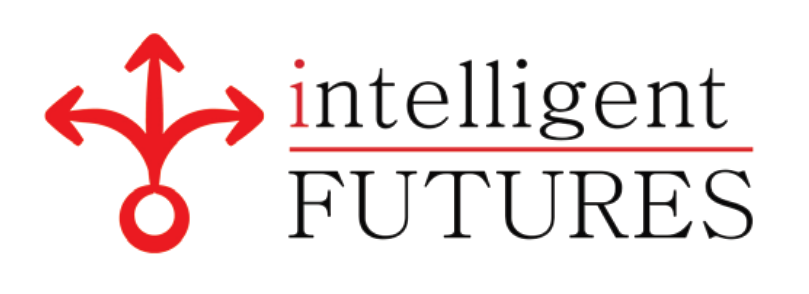In my innovation work, I’ve encountered scepticism about futures thinking amongst decision makers with a business as usual (BAU) mindset more concerned with optimising the status quo rather than growth based on new value creation. A dominant BAU mindset can place limits on thinking and make it harder to hold possibility as a key consideration in decision making. Neglecting possibility – arising from deliberate future thinking – risks missing the strategic implications of operational decisions taken across and down through all levels of the business. Imbued with an enthusiasm to solve ‘the’ problem in front of us, we can fail to see the problems that we create at scale.
Futures thinking also entails a greater sensitivity to change and uncertainty in the external environment. Where the level of disruption facing the business is high, procrastination may pose a bigger risk than making a poor decision. Decision makers need to understand what may happen next and respond to uncertainty in a measured way because the path to new value creation is through risk taking. To stimulate appropriate risk taking, futures thinking needs to be brought to strategic conversations across the business. Importantly, futures thinking helps shift the focus in strategic conversations from products and process to context, unleashing discretionary capital and creativity, which are core to sustaining an innovation culture.
If futures thinking is so valuable, then why is an explicit consideration of the future – with its many possibilities – so often excluded from today’s decision making? I’ve found that BAU thinking is not necessarily a rejection of new possibilities but often an unwillingness to move beyond the seeming clarity of BAU. Highlighting the imperative for change makes life harder for decision makers by presenting them with new choices, each with unknown risks – including the risk of making no choice at all. Bringing the future into today’s decision making requires managing this added uncertainty without losing the insight offered by possibility.
This discussion has been theoretical but still grounded in my real-world professional experience. To provide a practical application of futures thinking to today’s decision making, let’s consider the challenge of water damage claims for general insurance businesses – a prosaic issue but typically amounting to hundreds of millions of dollars in costs annually for a large general insurer. The successful resolution of this challenge would result in significant savings for the insurer, as well as weakening pressure on the growth of home insurance premiums.
A traditional approach to this challenge – anchored in the current context – could be framed as ‘How might we reduce water damage claims in the home?’ A futures-thinking approach – extending across multiple contexts – could be framed as ‘How might we create value from potential water damage in homes?’ While the traditional approach does create value, the benefits are limited to the business of today. The futures-thinking approach promises to create value within the business of today, as well as the business of tomorrow. With a change in mindset, our biggest challenges can become the source of our biggest opportunities.
In practice, the traditional approach – focusing on the problem in isolation – might offer an incentive to customers to fit a simple, low-cost, micro-leak detection device to their main water supply in the home, allowing the main supply to be turned off automatically on detection of a micro-leak, thereby avoiding water damage. Notice that the solution space is overlayed on the problem space and anchored in the business of today.
In contrast, the futures-thinking approach begins by examining the problem in multiple contexts, each with its own intelligence requirements.
- In the current context, the need for home insurance is waning as homes become ‘smarter’; self-aware, more resilient to damage, and even capable of self-repair. Here, a business model reliant on ‘restoration’ as the customer value proposition is doomed to irrelevance over time.
- In the future context, we can imagine data as a fungible asset, and core to a vibrant and pervasive data economy, with data as the new oil. People are already aware of the latent value of their personal data, so the smart home ecosystem of the future will become a valuable source of data able to be transacted by households.
- In the transitional context – between the current context and the future context – the effects of systemic change will reshape our external environment, creating weak signals of new business models. Importantly, by holding onto possibility we can now extend our thinking well beyond the initial problem and more easily release the anchor from the business of today.
The absence of well-considered and executable responses in the presence of new business models can be catastrophic for incumbent businesses; consider Nokia, Blackberry, amongst many other examples. My recommended approach is to construct ‘growth pathways’ linking our future context to our current context through the intervening space. On the growth pathways, we can conceive and sequence new propositions to grow, transfer and capture emerging value stimulated by tensions between the business of today and the business of tomorrow. Each proposition can prepare the way for the subsequent proposition while ultimately preparing the business for the future context.
To illustrate the construction of a growth pathway, let’s return to the challenge of water claims outlined earlier in this article. Could the insurer acquire new capabilities such as data analytics to draw additional insights from aggregating the data from many smart home ecosystems? Could the insurer use these insights to become a data broker in the new data economy, perhaps servicing local utilities concerned with optimising water pressure across urban sprawls? Could the insurer use the sale of household data to reduce or eliminate insurance premium costs for the customer or even create a new revenue stream for the customer? These are all intelligence requirements arising from a deliberate consideration of possibility, which can be tested through experimentation and business model development.
By using futures thinking to hold possibility as an explicit consideration in today’s decision making, businesses can capture bigger opportunities. These opportunities emerge well beyond today’s problems but are linked to today’s problems through growth pathways. We can bring the future into today’s decision making, using growth pathways to help decision makers better frame, navigate and seize these opportunities. As Einstein observed, logic will get you from A to B but imagination will take you everywhere.

